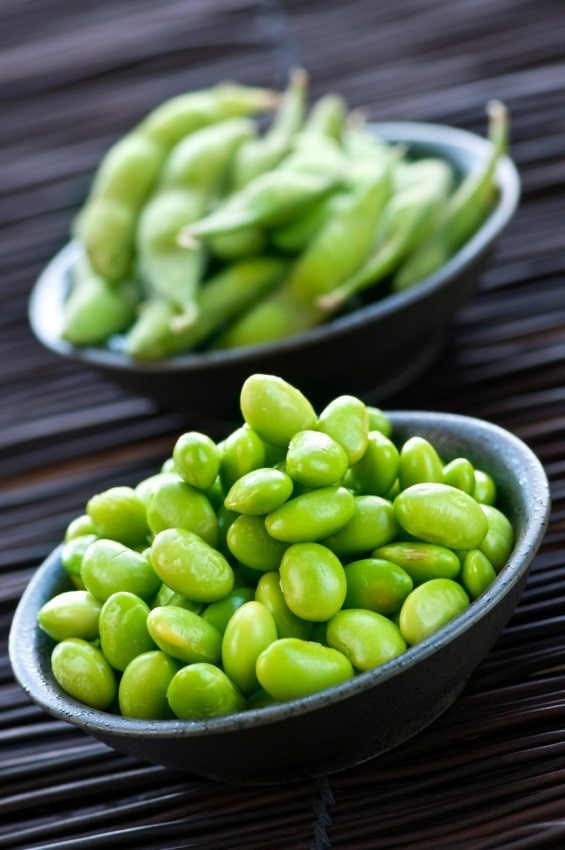Protein is not married to muscle heads or extreme athletes. Every loving, single body requires protein to perform basic functions. In fact, the older we get the more we need it. The good news is protein powders and supplements are one of the easiest macronutrients to come by with a new assortment hitting shelves each year. But with this growing selection comes a gradually building headache, as you clamor through to find one that’s clean, dairy free or offers the most amino acids per serving. Don’t give up on finding your match just yet. Regardless of your health goals, there’s a protein out there that’s made for you.
Though I can’t promise love at first bite, this should help guide you down the protein aisle without a hitch.
Your health interests: Meatless Mondays, tofu tacos and preferably all things cruelty free.
Your best match: Plant-based proteins, such as hemp, rice, pea and soy. You could speed date to test them all, but each one offers its own unique qualities to take into consideration.
Hemp – Vegans can rejoice knowing that hemp protein provides essential fatty acids without the fishy aftertaste. Hemp also offers all essential amino acids and nearly a third of your daily fiber needs.
Your first taste: In a blender, mix 3 tablespoons hemp protein with 1 cup unsweetened almond milk and 1 ripe banana for the perfect grab-and-go breakfast or midday boost.
Rice – Those with food allergies or sensitivities can enjoy brown rice protein powder, because it’s considered the most hypoallergenic option on the market today. It’s naturally free of gluten, dairy and soy, while providing a strong amino acid profile, iron, phosphorous and (surprisingly) very few carbs.
Your first taste: Amp up your bowl of oats with a tablespoon of vanilla brown rice protein powder and a dash of cinnamon.
Pea – Another allergen-friendly option, pea protein packs in branched-chain amino acids (BCAAs), 30% the Daily Value of iron and lots of muscle-building lysine. A pure pea protein concentrate is very low in calories while still dishing out 15 grams of protein.
Your first taste: Sprinkle a tablespoon or two of unflavored pea protein powder into a broth-based soup – especially nourishing when you’re fighting the sniffles.
 Soy – Not only is soy naturally lactose free and easy to digest, it’s rich in phytosterols and isoflavones, the active compounds with heart health benefits.* When shopping for a soy protein powder, be sure to choose non-GMO to limit your exposure to harmful pesticides.
Soy – Not only is soy naturally lactose free and easy to digest, it’s rich in phytosterols and isoflavones, the active compounds with heart health benefits.* When shopping for a soy protein powder, be sure to choose non-GMO to limit your exposure to harmful pesticides.
Your first taste: Instead of creamer, mix ½ a scoop of vanilla soy protein into your morning coffee for a latte-style cup.
Blends – Like a little bit of everything? Blended formulas are famous for featuring the power of greens with a mix of plant proteins, so you can get a range of nutrients in one shot.
Your first taste: If blends, like Lifetime Life’s Basics Plant Protein Mix, are too “green” for your taste buds, add two scoops to a blender with sweet berries, chocolate almond milk and some cacao nibs.
________________________________________________________________________________
Your health interests: Building muscle mass, maintaining a healthy weight and occasionally splurging on protein treats
Your best match: Whey protein, which is available in the largest variety of flavors, textures and types.
Whey is one of two main dairy proteins of milk (casein being the other). When milk is made into cheese, it naturally separates the two proteins into curds and a liquid. The liquid substance is where you find whey protein and its many protein subfractions, including beta-lactoglobulin, alpha-lactalbumin, immunoglobulins, bovine serum albumin, glycomacropeptides and minor peptides like lactoperoxidases, lysozyme and lactoferrin. Keeping these highly bioactive subfractions intact is important for getting the greatest gains from whey protein. Whey has also proven to increase glutathione synthesis to help protect the body from oxidative stress.*
Concentrate: When the liquid whey is dried it becomes whey protein concentrate with about 80-85% protein. This is a very pure version of whey, as it does not require changing, or denaturing, the biological integrity of the protein subfractions.
Isolate: Whey isolate, on the other hand, is further processed in order to get a 90-96% protein makeup with less lactose and fat. The downside is processing whey protein into an isolate risks losing the pure, active compounds that are not altered in whey concentrate.
Your first taste: Bake with whey to make these swoon-worthy Fudge Protein Brownies with Marshmallow Frosting. Even the frosting is made with vanilla whey protein.
Not into protein shakes or desserts? Use a sprinkling of this unflavored whey isolate powder to add a protein boost to salad, pasta, cereal, soup and more.
________________________________________________________________________________
Your health interests: Keeping body fat down, smiling a lot and getting a good night’s sleep
Your best match: Casein protein for its slow-digesting properties. 
Remember, casein is the lumpy curd substance that forms when milk proteins divide during coagulation. This unusual knack for clotting is actually what makes casein so beneficial for keeping your belly full longer and your appetite in check.
As casein forms into a gel in the stomach, it allows for a slow and steady release of amino acids into the blood stream. This is why it’s most often taken at bedtime when your body is in repair mode and can benefit the most from this slow digestion. The Department of Human Biology, Nutrition and Toxicology Research Institute in the Netherlands backed this up when they found that casein contributes to a higher sleeping metabolic rate.
And when it comes to your oral health, casein is sure to make you smile. A study from the U.K. determined that casein and casein-derived proteins can actually help prevent enamel erosion.
Your first taste: Protein “nice” cream after an evening workout or a long, laborious day at work is one of the best ways to show your body some lovin’. In a blender or food processor, mix 1 frozen banana with 1 scoop of chocolate casein powder and a touch of milk. Blend until smooth and an ice cream consistency. Add more milk if needed.
________________________________________________________________________________
Your health interests: You eat clean and train mean, but your active social life keeps you constantly on the go.
Your best match: Egg white protein, because it truly is incredible.
We know that whey is fast-digesting and casein is on the slower side, but egg protein falls somewhere in between. This allows muscle protein synthesis to run more steadily compared to whey alone, so your energy levels are stable throughout your busy day. Using only the whites means you get all protein and zero cholesterol or fat. Finally, you can stop worrying about what to eat on the go. Egg protein powder makes for a well-balanced, clean and complete protein in a pinch. Meanwhile, to support your hard training schedule, egg protein fuels your muscles with more of the BCAA leucine than any other protein source.
Your first taste: Make a completely dairy-free, low-carb breakfast shake with 1 scoop chocolate egg protein powder and 12 ounces of almond milk.
Still can’t decide? Take the protein quiz to help narrow it down even more.

